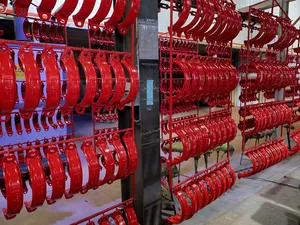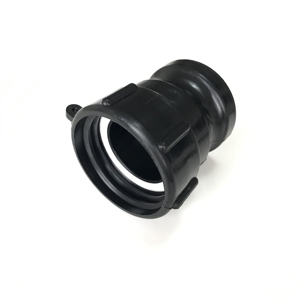

WFHSH UL FM Approved Pipe Fittings Grooved Fire Fitting 2" Ductile Iron Angle Pad Coupling Grooved Coupling And Fittings






















Plastic male reducer couplings are essential components in the construction of versatile piping systems. These fittings serve to connect pipes of different diameters, ensuring a secure and efficient transition in fluid transport networks. Utilized across a spectrum of applications, from irrigation systems to complex industrial pipelines, the adaptability of these couplings makes them a staple in both commercial and residential settings.
The selection of materials for plastic male reducer couplings is critical and is typically dictated by the nature of the fluids they will carry. Polyvinyl chloride (PVC) is a prevalent choice due to its smooth internal surface, which minimizes flow resistance. Its lightweight nature and cost-effectiveness make PVC an attractive option for many. Conversely, for environments where corrosion resistance is paramount, alternative materials such as copper may be considered, particularly for underground applications where durability is key.
The design features of plastic male reducer couplings contribute to their functionality and reliability. The smooth walls of PVC couplings, for instance, reduce the likelihood of blockages and maintain consistent flow rates. The inherent lightweight of plastic fittings eases handling and installation processes, while their resistance to a broad range of chemicals enhances their suitability for diverse industrial uses. Moreover, the non-corrosive nature of plastic ensures longevity, even in harsh environmental conditions.
In addition to plastic male reducer couplings, a comprehensive piping system incorporates various other fittings. Components such as P-traps play a crucial role in maintaining hygiene standards by preventing backflow of odors, while pipe caps are instrumental in sealing pipe ends to halt fluid flow and safeguard pipe threads. Each fitting is designed to fulfill a specific function, ensuring the integrity and efficiency of the overall system.
Choosing the right plastic male reducer coupling involves considering the operational demands of the piping system. Factors such as fluid characteristics, pressure requirements, and environmental conditions are critical in determining the most suitable coupling type. It is essential to match the coupling material and design to the specific needs of the application to ensure optimal performance and durability.
Integrating plastic male reducer couplings into a piping system requires careful planning and consideration of the system's layout. These couplings are pivotal in managing changes in pipe diameter, ensuring a seamless flow within the network. Their role is not only functional but also contributes to the overall safety and maintenance of the piping infrastructure.
plastic male reducer coupling